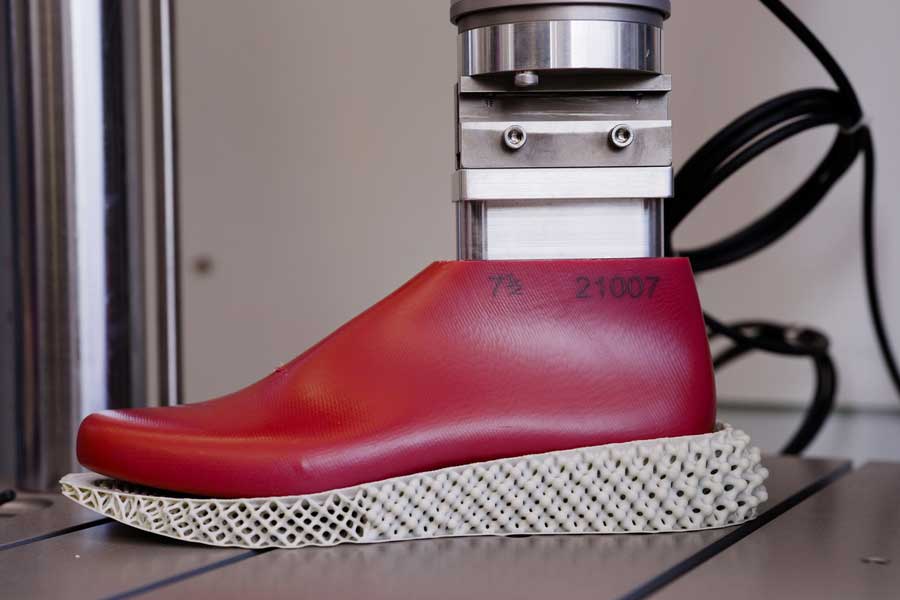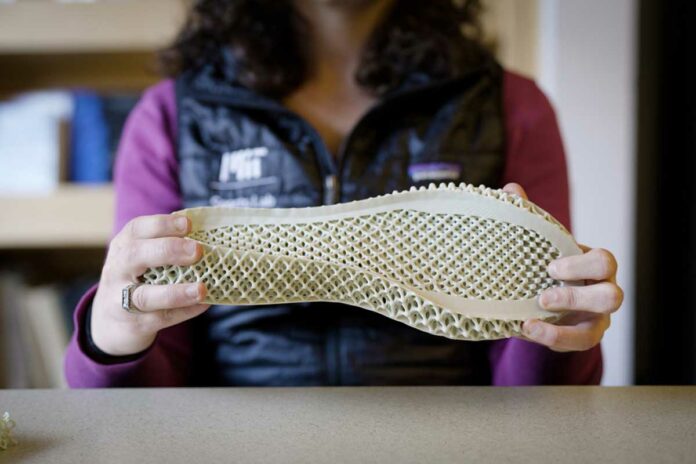Shoe manufacturing technology advances faster than new shoe designs can be evaluated in human subject trials. A recent study presents a model for estimating how new shoe properties will affect runner performance to aid in the design process.
MIT engineers have developed a new model predicting how specific shoe properties affect a runner’s performance.
A Tool for Better Running Shoes: This simple model considers your height, weight, and shoe features like stiffness. It pretends to be you and shows how you would run in a specific shoe.
Researchers use the model to see how your running changes with different shoes. They find the shoe that makes you utilize the least energy when running, calling it the best performance.
The model is great at comparing very different shoes, but not so good with similar ones, like those in stores. Researchers think it’s best for shoe designers wanting to create new and unique sneakers.

Sarah Fay, a postdoc in MIT’s Sports Lab and the Institute for Data, Systems, and Society (IDSS), said, “Shoe designers are starting to 3D print shoes, meaning they can now make them with a much wider range of properties than with just a regular slab of foam. Our model could help them design novel shoes that are also high-performing.”
The team looks forward to improving the model so that consumers can one day use a similar version to pick shoes that fit their running style.
The team collaborated with the sneaker industry, especially those using 3D printing for commercial-scale shoe production. The focus was on 3D-printed midsoles with complex designs, offering bounce or stiffness in specific areas.
The challenge lies in predicting how a runner reacts to an entirely new shoe. It involves understanding the runner’s dynamics and the unique properties of the shoe.
Fay and Hosoi started by simplifying a runner’s movements using a basic model. They were inspired by Thomas McMahon, a biomechanics expert at Harvard in the 1970s, who used a simple ‘spring and damper’ model to understand essential running mechanics. McMahon’s model predicted that runners would perform better on softer, bouncier tracks that matched their natural stride.
This insight, though commonplace now, was groundbreaking at the time. Based on McMahon’s findings, Harvard even redesigned its indoor track, leading faster to run times on the softer, springier surface.
McMahon’s work emphasized that, even with a basic model that doesn’t capture every detail of the human body, we can still gain valuable insights into designing for athletic performance.
Fay and Hosoi created a simplified model inspired by McMahon’s work. In their model, a runner is represented as a center of mass with a rotating hip and a stretchable leg. The leg is connected to a shoe-like box with adjustable springiness and shock absorption vertically and horizontally.
The idea was to input a person’s basic details (height, weight, leg length) and the shoe’s material properties (stiffness of the front and back midsole) into the model. This way, they could simulate how a person might run in that specific shoe.
Recognizing that a runner’s gait involves:
- An intangible quality.
- Termed the ‘biological cost function.’
- The team aimed to identify this function.
It’s a factor a runner may unconsciously minimize during a run. If they could find a common biological cost function for most runners, they believed they could predict a person’s gait in a specific shoe and determine which shoe leads to the best running performance.
To uncover this, the team referred to a previous treadmill study that measured various aspects of runners, like impact force, joint angles, motion, step springiness, and muscle work, all while wearing the same type of running shoe.
Fay said, “If we tell our model to ‘Optimize your gait on these two things,’ it gives us realistic-looking gaits that best match the data we have. This gives us confidence that the model can predict how people will run, even if we change their shoes.”
In the final step, the researchers simulated various shoe styles, employing the model to predict a runner’s gait and assess the efficiency of each gait with different types of shoes.
Journal Reference:
- Anette (Peko) Hosoi, Sarah Fay. Modeling Running via Optimal Control for Shoe Design. J Biomech Eng. DOI: 10.1115/1.4064405
